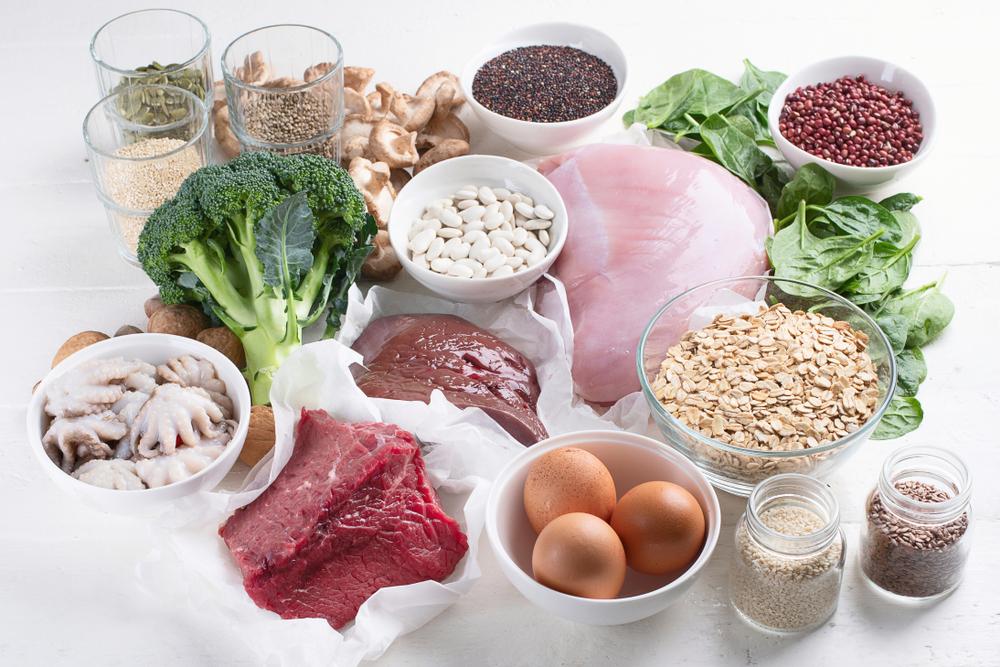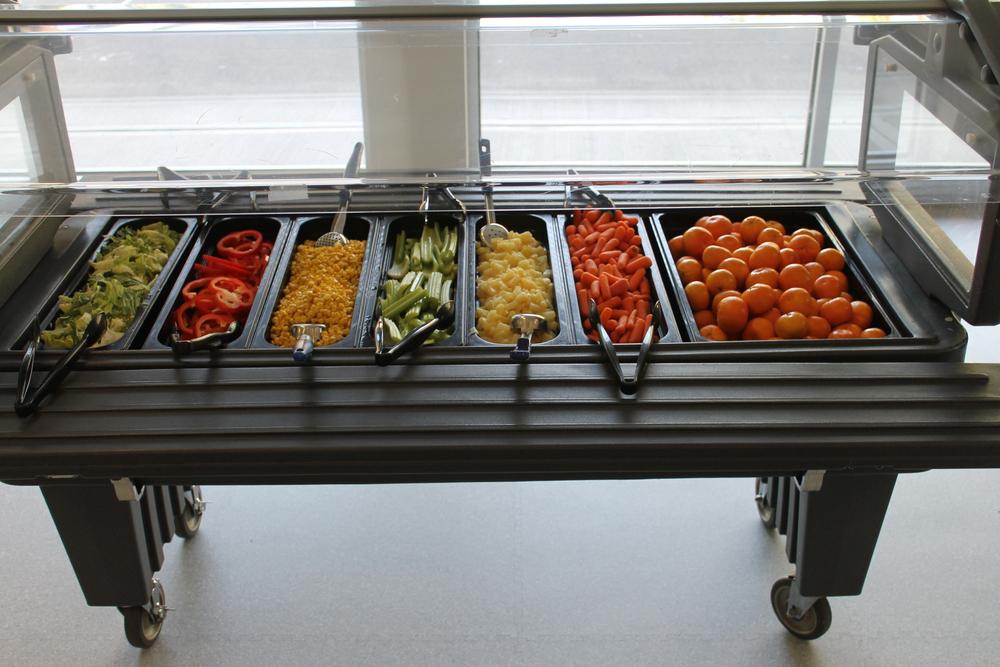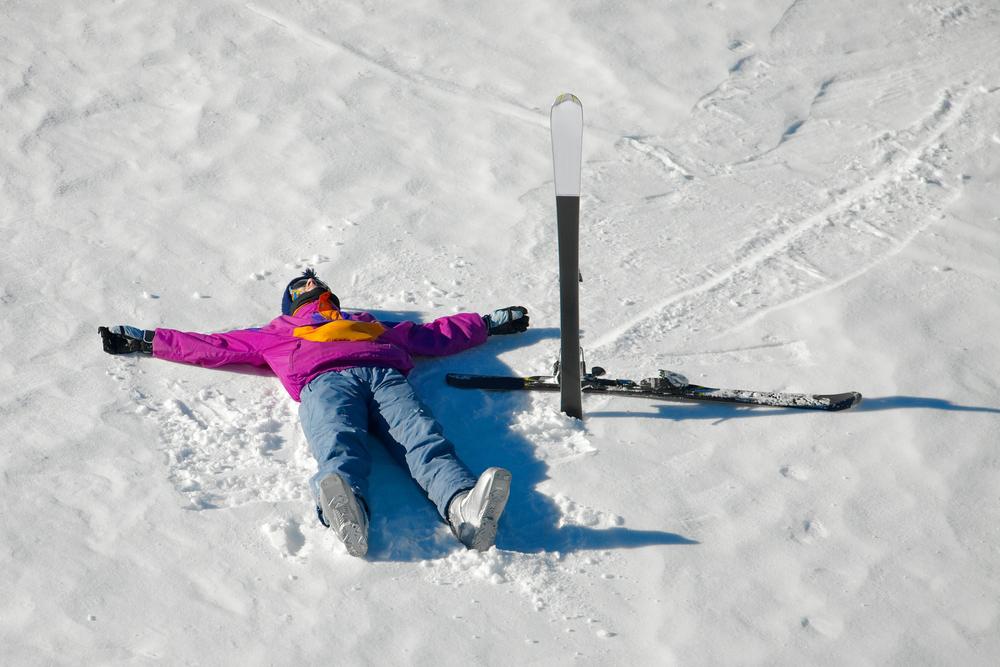
Iron and vitamin D are two common athlete nutrient deficiencies that can have a big impact on athletic performance and overall health. But treating them with food or supplements isn’t the only answer—finding out the reason for the deficiency is just as important.
Laura Lewis, PhD, Director of Science at the U.S. Anti-Doping Agency, explains that before an athlete considers supplementing with a pill or liquid form of iron or vitamin D, it’s important to consult a doctor and get bloodwork to confirm a deficiency exists. “It’s really important not to just self-manage and assume you’re nutrient deficient,” says Lewis. “You always want to get your levels assessed, and it’s really important to find out the reason for the deficiency. You want to fix the cause of that deficiency as well as resolve the immediate need for the nutrient.”
Here, Lewis explains signs and symptoms of these common nutrient deficiencies, as well as how they can be treated.
IRON
Signs and impacts of deficiency
“When you’re low on iron, you may get quite pale and look washed out,” says Lewis. “You may also be very tired, irritable, unable to concentrate on schoolwork, or even struggling to get out of bed.”
“In terms of trying to do any sporting activity, an athlete may really struggle,” says Lewis. “Sometimes, your legs feel like jelly, particularly after a hard effort. You just don’t feel you have the ability to recover between those efforts. You’ll be constantly out of breath. You might also have a massive decline in a task that was easy at one point, so that now it’s become super hard.”
Why the deficiency exists
Iron is an essential component of red blood cells. If we don’t have enough iron, our bodies can’t continue to maintain those red cell levels at an appropriate level and the numbers start to decline. Left untreated, a mild iron deficiency can ultimately spiral into severe anemia.
“With iron deficiency, there can be some quite drastic causes, like a major blood loss, which you’d probably know about. But alternatively, there could be internal bleeding or ulcers,” says Lewis. “Or if you have celiac disease or inflammation in the gut, you may not be absorbing the iron that you’re taking in.”
The other main reason for a deficiency is that you don’t have a good source of iron in your diet, or the source is insufficient. Vegetarians, vegans, and athletes going off to college and only eating plain pasta are all athletes who may be at risk of low iron.
“There’s also a lot of pressure on young women to have lower energy diets, so often you’re seeing young women doing a lot of high training load but then trying to keep their energy intake quite low to maintain a low body mass. They’re at high risk,” says Lewis. “There is a fair amount of pressure on boys to lower body composition as well, which can affect their overall iron intake.”
How to address deficiency with food and when to supplement
First, figure out the reason for the deficiency. “If there’s something more sinister going on, like an ulcer or an energy deficiency issue, it’s really important to get to the bottom of that,” says Lewis. “Otherwise, if you do try and treat the problem, it might work for a little bit, but then you’re going to go back to square one.”
 If you’re just not eating enough iron rich foods, that’s fairly easy to identify and fix through dietary practices: Adding iron-rich foods like red meat or legumes to your diet is a simple starting point. “Working with a registered dietitian is a good place to start if you’re really struggling and if you want someone to work out exactly how much iron you’re taking in with your diet,” says Lewis. “But there are a lot of cereals and breads that are fortified with iron, various legumes and other vegetables have iron, and even dark chocolate is actually quite a good source of iron!”
If you’re just not eating enough iron rich foods, that’s fairly easy to identify and fix through dietary practices: Adding iron-rich foods like red meat or legumes to your diet is a simple starting point. “Working with a registered dietitian is a good place to start if you’re really struggling and if you want someone to work out exactly how much iron you’re taking in with your diet,” says Lewis. “But there are a lot of cereals and breads that are fortified with iron, various legumes and other vegetables have iron, and even dark chocolate is actually quite a good source of iron!”
Before we talk about supplements, it’s important to note that too much iron is a bad thing. That’s why it’s important to get bloodwork to make sure that low iron is actually a problem before starting any kind of supplemental routine.
Vegan or vegetarian athletes doing a high amount of training will likely need to use an iron supplement because it will be quite hard for them to get enough iron, says Lewis. “You have heme iron sources or non-heme iron sources, and the non-heme iron sources like vegetables and grains don’t absorb as well,” she explains. “Steak is going to trump spinach in terms of what the body can absorb. So often, the vegans and vegetarians will end up having to go to an iron supplement.”
Ferrous sulfate is one of the most common types of iron that’s easily absorbed into the body. If a doctor has approved supplementation, Lewis recommends finding a source that contains a minimum of 50 milligrams of elemental iron. “Ask a doctor or a dietitian to help navigate the different sources,” she adds. “Liquid iron is often recommended for people who have trouble absorbing it, or if they get gastrointestinal problems from taking iron in pill form.”
If you’re taking an iron supplement, take it with food and a source of vitamin C to promote optimal absorption. Lewis suggests having it at breakfast with a few sips of orange juice. “But on the flip side, caffeine, calcium, and tannins in tea actually block iron absorption. So, an iron supplement with your milky coffee in the morning would not be so good,” she adds.
You don’t necessarily need to supplement forever: How long you supplement for depends on the reason why you were deficient in the first place. Usually, a dietitian or the doctor would want to do a follow up between six weeks and three months after, depending on what the cause was. They might recommend another blood test. Then, you may check in every six months or yearly after that, just to make sure that you didn’t go back down into a low state.
Vitamin D
Signs and impacts of deficiency
Low vitamin D can result in low bone density, so the first warning sign of a deficiency might be a stress fracture. But you may also have similar symptoms to low iron: fatigue, muscle weakness, poor sleep, pain, a weakened immune system, and even depression. Ultimately, a blood test is necessary to determine if an athlete has low vitamin D.
Why the deficiency exists
“People who are going to be at risk of low vitamin D are those who don’t go outside very much and see the sun. So particularly in parts of Canada or in Europe, where there are really long nights and short days, it can be an issue,” says Lewis. “But in the U.S., we’re so worried about going out in the sun because of the potential for skin damage, so even if you’re outside often, you won’t absorb much vitamin D if you’re covered up.”
How to address deficiency with food and when to supplement
 Food isn’t the issue here, sunshine is. “While we don’t want people to be getting skin cancer, getting at least an hour of sun in that middle part of the day goes a really long way to ensuring that you’re getting your vitamin D dose naturally,” she says. “If you’re going for a run midday, I recommend covering the top parts of your arms and legs and wearing a hat, but then letting your lower arms and your lower legs stay exposed. That’s enough: You don’t have to be in a bikini to get that healthy dose of sun exposure!”
Food isn’t the issue here, sunshine is. “While we don’t want people to be getting skin cancer, getting at least an hour of sun in that middle part of the day goes a really long way to ensuring that you’re getting your vitamin D dose naturally,” she says. “If you’re going for a run midday, I recommend covering the top parts of your arms and legs and wearing a hat, but then letting your lower arms and your lower legs stay exposed. That’s enough: You don’t have to be in a bikini to get that healthy dose of sun exposure!”
Vitamin D can be a bit tricky because it’s not a quick fix. Your vitamin D levels take a long time to change in either direction. So, it can be the middle of summer when you actually present with low vitamin D from the winter before! And it’s going to also take quite a long time to build it back up again.
Unfortunately, you can’t really supplement vitamin D with just food (although consuming vitamin-D rich foods such as fatty fish and fortified dairy products are a good start)—but that doesn’t mean you should start supplementing if you haven’t confirmed low vitamin D. Get tested first. “If a doctor does decide that you need to supplement, there are various options, and there are some slow-release tablets where you only have to take one and it lasts for three months,” Lewis says. “But the doctor has to decide the best dose for you.”
________________________
TAKEAWAY
Both iron and vitamin D deficiencies can result in negative health effects and a decrease in athletic performance. Both should be diagnosed by a doctor who looks at an athlete’s bloodwork and helps the athlete determine the root cause of the deficiency before prescribing a supplement or a food-focused fix. Talk to a doctor or dietitian if you suspect your athlete has a deficiency in either nutrient, and in the meantime, ensure that your athlete is eating plenty of iron-rich food sources and maintaining some sun exposure when possible.



